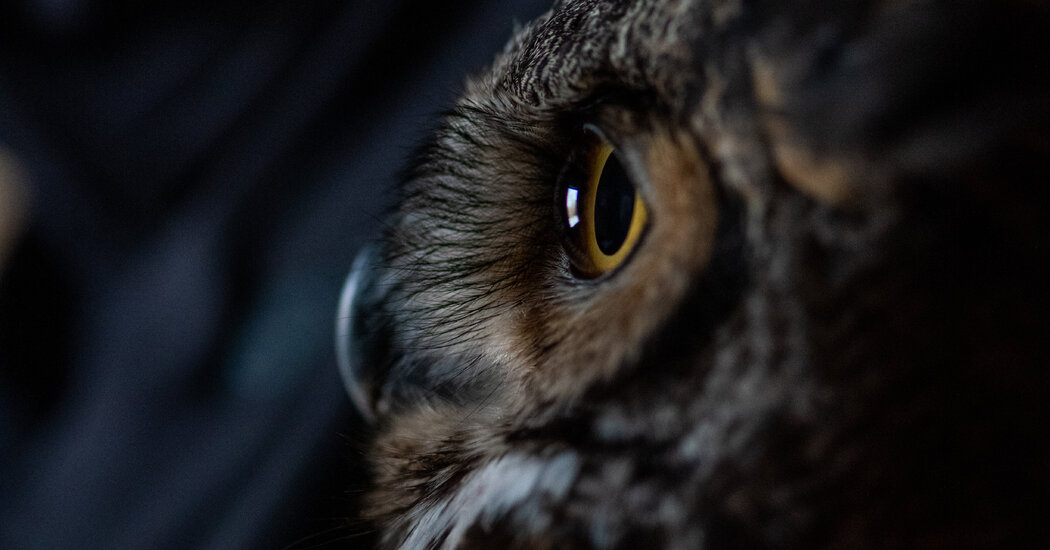It’s quiet on the back roads of Boyds, Md., where a small compound studded with bird feeders breaks up the monotony of the surrounding cornfields.
Suddenly, a souped-up Toyota Tacoma kicks up a cloud of dust as it pulls into view on a gravel path. It slows to a halt. A figure steps out of the truck: a woman with a glove covering one arm and a sleeve of hawk tattoos covering the other. Reaching into the passenger seat, she pulls out a box, one that seems to be fighting her back.
This one, I knew, would be headed for the I.C.U.
Nancy McDonald is a volunteer rescuer at the Owl Moon Raptor Center, an organization based in Boyds that helps rescue and rehabilitate injured raptors — including hawks, owls, eagles and ospreys — before returning them to the wild.
The word “raptor” derives from the Latin verb “rapiō,” meaning “to seize.” All raptors have four characteristics: a hooked beak, sharp talons, keen eyesight and a carnivorous diet.
In some respects, birds of prey that live among human populations have a fragile life cycle. The threats they face include rodenticides (pesticides that kill rodents), entanglement with fishing lines and wires, car strikes and collisions with windows.
In other ways, though, the animals are incredibly adaptive.
Peregrine falcons sometimes use high-rise buildings as their aeries; ospreys can occupy man-made platforms to raise their chicks; and committees of vultures sometimes take over dumpsters, said Ms. McDonald, a 62-year-old U.S. Army veteran who began as a rescue volunteer in 2017. (And yes, “committee” is one of the terms for a group of vultures.)
I first learned about Ms. McDonald and the Owl Moon Raptor Center, whose primary operator is Suzanne Shoemaker, an expert in animal behavior and ecology, when I was a college student in Washington, D.C. Then an aspiring wildlife photographer, I assumed I’d have to travel to far-flung places in order to find subjects to photograph.
And yet, on my way to and from classes, I would often see hawks soaring above the cityscape. Eventually I began to track the birds in between lectures, searching for signs of broken branches or the carcasses of their prey. Spending so much time looking for hints of the birds led me to wonder about the threats they faced and about those who worked to save them.
When the pandemic hit in 2020, I moved back to my family home in the suburbs. But still intrigued by the birds, I posted a question in a local birding group on Facebook, and Ms….
Click Here to Read the Full Original Article at NYT > Travel…
